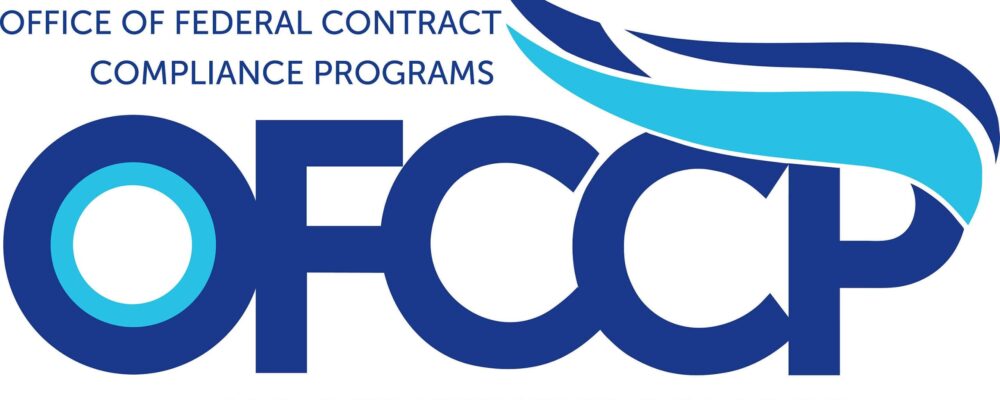Quick Hits
- Restrictions on contact have been modified to eliminate mutual no-contact orders as the default.
- Supportive measure decisions are appealable.
- Procedures for emergency removal of a student respondent and placement of an employee respondent on administrative leave have been clarified.
- The final regulations take effect on August 1, 2024.
§ 106.44—Recipients’ Duty to Address Sex Discrimination
Knowledge and Notice
Section 106.44 provides specific requirements for the institution’s response to sex discrimination. It requires a prompt and effective response once the institution has “knowledge of conduct that reasonably may constitute sex discrimination.” To do so, the Title IX coordinator must monitor the education program or activities for barriers to reporting and must take steps reasonably calculated to address those barriers.
The rule generally requires nonconfidential employees to notify the Title IX coordinator when the employee has “information about conduct that reasonably may constitute sex discrimination.” The institution “must notify all participants in the [] education program or activity of how to contact its confidential employees.” A confidential employee must explain his or her status as a confidential employee and provide the reporter with contact information for the Title IX coordinator and how to make a complaint.
If the Title IX coordinator is notified of information “provided by a person during a public event to raise awareness about sex-based harassment that was held … on campus or through an online platform sponsored by a postsecondary institution,” the institution is not required to act unless there is “an imminent and serious threat” to a person’s health or safety. Regardless of whether it acts or not, the institution must use the information in its efforts to prevent sex-based harassment.
Title IX Coordinator’s Responsibilities
Generally, the Title IX coordinator is responsible for coordinating the institution’s compliance with the Title IX obligations. The Title IX coordinator must promptly and effectively take action to end sex discrimination, prevent recurrence, and remedy its effects. To do so, the Title IX coordinator must treat both the complainant and respondent equitably, offer supportive measures, notify the complainant (and if a complaint is filed, the respondent) of the grievance process and informal resolution process, and initiate the grievance process or informal resolution process if requested by all parties. However, the Title IX coordinator does not need to follow these procedures if he or she reasonably determines that the conduct as alleged could not constitute sex discrimination.
If a complaint has not been initiated or allegations have been withdrawn, the Title IX coordinator must determine whether to initiate a complaint of sex discrimination under the grievance procedures. To make that determination, the Title IX coordinator must consider eight specifically enumerated factors:
- “The complainant’s request not to proceed with initiation of a complaint”
- “The complainant’s reasonable safety concerns” associated with initiation of a complaint”
- “The risk that additional acts of sex discrimination would occur if a complaint is not initiated”
- “The severity of the alleged sex discrimination”
- “The age and relationship of the parties”
- “The scope of the alleged sex discrimination”
- “The availability of evidence”
- “Whether the [institution] could end the alleged sex discrimination and prevent its recurrence without initiating its grievance procedures”
If the Title IX coordinator determines there is “an imminent and serious threat to the health or safety of the complainant or other person,” or the alleged conduct prevents equal access on the basis of sex, the Title IX coordinator may initiate a complaint. If a complaint is initiated, the Title IX coordinator must provide notice to the complainant prior to initiating the complaint, so as to address safety concerns and discuss supportive measures.
Whether a complaint is initiated or not, the Title IX coordinator must take other appropriate prompt and effective steps to ensure the sex discrimination does not continue or recur.
Supportive Measures
Subsection (g) requires institutions to provide “supportive measures.” Like the 2020 regulations, the 2024 regulations provide a nonexclusive list of examples of supportive measures, including counseling, deadline extensions or other course adjustments, campus escorts, increased security and monitoring of campus areas, and leaves of absence. Both the 2020 and 2024 regulations include changes to work or housing arrangements, but the 2024 regulations add changes to class, extracurricular activities, and any other activities “regardless of whether there is or is not a comparable alternative.”
Restrictions on Contact
The most significant change from 2020 concerns “restrictions on contact,” often known as “no-contact orders.” The 2020 regulations provided for “mutual” contact restrictions as the default. The 2024 regulations eliminate the mutuality requirement, providing for contact restrictions “applied to one or more parties.” The preamble suggests considering the following factors when determining whether to issue no contact orders:
- “the need expressed by the complainant or respondent”;
- “the ages of the parties involved”;
- “the nature of the allegations and their continued effects on the complainant or respondent”;
- “whether the parties continue to interact directly in the recipient’s education program or activity, including through student employment, shared residence or dining facilities, class, or campus transportation”; and
- “whether steps have already been taken to mitigate the harm from the parties’ interactions, such as implementation of a civil protective order.”
Subsection (g) carries forward the 2020 regulations’ prohibition on imposition of supportive measures for punitive or disciplinary reasons and unreasonably burdening either party. The regulations allow supportive measures to include involuntary changes to a party’s class schedule if the change does not unreasonably burden the objector. The preamble explains that the recipient is expected “to engage in a fact-specific inquiry to determine whether supportive measures constitute a reasonable burden on a party.” Subsection (g) provides that supportive measures may be appropriately modified or terminated at the conclusion of the grievance procedure or information resolution process.
Supportive Measure Appeals
The 2024 regulations add a procedure for appeals of supportive measures. Subsection (g)(4) requires a recipient to provide an opportunity for the complainant or the respondent to seek modification or reversal of the decision to provide, deny, modify, or terminate supportive measures. The review must be conducted by an impartial employee who is someone other than the employee who made the challenged decision, and the reviewing employee must have authority to reverse or modify the decision. The preamble provides that “challenges to supportive measures could include, … but are not limited to, whether a supportive measure is reasonably burdensome, whether a supportive measure is reasonably available, whether the supportive measure is being imposed for punitive or disciplinary reasons, whether the supportive measure is being imposed without fee or charge, and whether the supportive measure is effective in meeting the purposes for which it is intended, including to restore or preserve access to the education program or activity, provide safety, or provide support during the grievance procedures.” (Emphasis added.) The preamble says that the recipient has flexibility in determining whether to offer the supportive measures review opportunity before or after the supportive measure has been imposed.
Confidentiality
Subsection (g)(5) explains confidentiality as it applies to supportive measures, limiting disclosure of information concerning the measures to the parties, “unless necessary to provide the supportive measure or restore or preserve a party’s access to the education program or activity” or if a more general confidentiality exception of §106.44(j) applies. The preamble states that the recipient should disclose to one party a supportive measure provided to the other party only if necessary to provide the supportive measure. For example, if the recipient provided counseling to one party, there is likely no reason to disclose that supportive measure to the other party. If one party has been moved to a new dorm, however, it may be necessary to disclose that fact to the other party to maintain a no-contact order.
Disability Services
For postsecondary institutions, the regulations allow but do not require the Title IX coordinator to consult with the recipient’s disabilities coordinator in complying with Section 504 of the Rehabilitation Act of 1973.
§ 106.44(h)—Emergency Removal
Removal of a Student Respondent
Subsection 104.44(h) allows a recipient to remove a respondent from the education program or activity on an emergency basis.
Before removal, the recipient must undertake an individualized safety and risk analysis to determine whether there is an “imminent and serious threat to the health or safety of a complainant or any students, employees, or other persons arising from the allegations of sex discrimination” justifying emergency removal.
Non-physical threats, such as stalking, may justify an emergency removal.
The preamble also distinguishes “immediate” threats where the recipient has no time to conduct a threat assessment and must involve law enforcement, from an “imminent” threat in which case a thorough threat assessment must be conducted.
Immediately following the removal, the recipient must provide the respondent with notice and an opportunity to challenge the removal decision.
The preamble clarifies that removal can include a “partial” removal, i.e., removal from one or more parts of the overall education program or activity.
Emergency Removal Versus Supportive Measures
The preamble emphasizes the difference between “emergency removal” and “supportive measures.” Supportive measures are designed “to restore or preserve a party’s access to the recipient’s education program or activity” and “protect the safety of the parties or the recipient’s educational environment.” Emergency removal, on the other hand, “require[s] an imminent and serious threat to the health and safety of the campus community or the risk assessment required under § 106.44(h).”
§ 106.44(i)—Administrative Leave
Placement of an Employee on Administrative Leave
Subsection 106.44(i) allows an institution to place an employee respondent on administrative leave during the pendency of the grievance procedures. The preamble clarifies that administrative leave may be a supportive measure under § 106.44(g), or an emergency removal under § 106.44(h), and in either case, the administrative leave decision must satisfy the procedural requirements and restrictions provided in those subsections. The preamble states that the rule also allows for administrative leave for reasons other than supportive measures or emergency removal, perhaps to comply with state law, internal policies, or a collective bargaining agreement. The regulations do not specify whether the administrative leave must be with or without pay, but the DOL said in the preamble that it understands “administrative leave” is “a temporary separation from one’s employment, generally with pay and benefits.”
§ 106.44(j)—Prohibited Disclosures of Personally Identifiable Information
Subsection 106.44(j) expands the privacy provisions in § 106.45, providing that personally identifiable information obtained in the course of complying with the Title IX regulations can only be disclosed in five prescribed circumstances:
- with the “prior written consent from a person with the legal right to consent to disclosure”;
- to a parent, guardian, or legal representative who has a right to receive the disclosure;
- to carry out the purposes of the regulations;
- “[a]s required by Federal law, Federal regulations, or the terms and conditions of a Federal award”; or
- if not in conflict with Title IX, when required by state or local law, or allowed by the Family Educational Rights and Privacy Act (FERPA). (FERPA is a federal law that protects the privacy of student education records and applies to all schools that receive funds under an applicable program of the U.S. Department of Education.)
Several department comments in the preamble remind recipients that information otherwise permissible to disclose may never be disclosed for a retaliatory purpose or to chill the exercise of Title IX rights.
106.44(k)—Informal Resolution in Some Circumstances
Informal Resolution Remains Discretionary
Subsection 44(k) provides institutions with discretion to offer an informal resolution process unless (a) the complaint includes allegations of sex-based harassment of an elementary or secondary student by an employee; or (b) such a process would conflict with federal, state, or local law. Unlike the 2020 regulations, there is no prohibition against offering informal resolution absent a formal complaint. Also, unlike the 2020 regulations, there is no longer a prohibition against a postsecondary institution offering an informal resolution process to resolve allegations that an employee sexually harassed a student, although that restriction still applies at the elementary and secondary levels.
The Institution Retains Discretion to Decline to Offer Informal Resolution
The institution retains discretion to decline to offer an informal resolution process, despite the wishes of one or more parties. As clarified in the preamble, the 2024 regulations provide only one example of when an institution can decide not to offer an informal resolution process: when it “determines that the alleged conduct would present a future risk of harm to others.” The preamble emphasizes the department’s intent to provide discretion to the recipient, but suggests the recipient may consider the factors that the Title IX coordinator must consider when deciding whether to initiate a complaint, as provided in § 106.44(f). The institution is not required to provide its reasons for declining to offer an informal process.
No Requirement to Investigate Before Offering Informal Resolution
The informal resolution process may be offered at any time before determining whether sex discrimination occurred through the grievance process. The preamble clarifies there is no requirement to investigate before the informal process is offered. If an informal resolution process is offered, the Title IX coordinator must, to the extent necessary, “take other appropriate prompt and effective steps to ensure that sex discrimination does not continue or recur ….” Participation in the informal process must be voluntary, and the recipient must receive the consent of the parties. Before initiation of the process, the recipient must provide a notice containing, among other things, the allegations, a description of the process, the right to withdraw from the process at any time before a resolution is reached and notice that upon resolution the parties cannot initiate or resume a grievance concerning the same allegations.
The Informal Process Facilitator Cannot Be the Investigator or Decisionmaker
The informal process facilitator cannot be the same person as the investigator or decision-maker, cannot have a conflict of interest, and must be properly trained. The regulations give little guidance on the terms of resolution agreements, listing only two nonexclusive examples: restrictions on contact and restrictions on participation in programs, activities, or events.
Key Takeaways
The final regulations are effective on August 1, 2024, and apply to complaints of sex discrimination regarding alleged conduct that occurs on or after that date.
These regulations are currently available only in an unofficial version. In addition, the department has released a fact sheet, a summary of the major provisions of the final regulations, and a resource for drafting Title IX nondiscrimination policies, notices of nondiscrimination, and grievance procedures.
Part one of this series addressed grievance procedures for resolving complaints of sex discrimination and sex-based harassment at postsecondary institutions. Part two of the series examined definitions, including types of harassment, “complainant,” and “complaint.” Part four, the concluding article in this series, addresses miscellaneous provisions, such as parental, family, or marital status; pregnancy or related conditions; and procedures incorporated from Title VI.
Ogletree Deakins’ Higher Education Practice Group will continue to monitor developments and provide updates on the Higher Education blog as additional information becomes available.
Follow and Subscribe
LinkedIn | Instagram | Webinars | Podcasts
“Ogletree Deakins has experienced professionals in all areas of labour and employment law who provide efficient, client-focused service. We represent employers of all industries and sizes, from small businesses to Fortune 50 companies.”
Please visit the firm link to site





